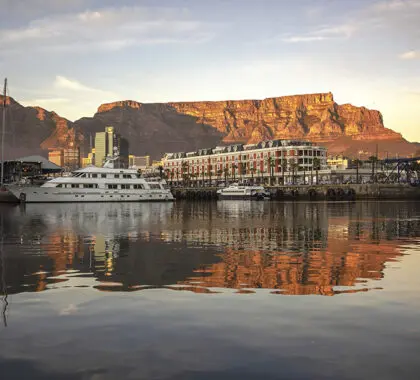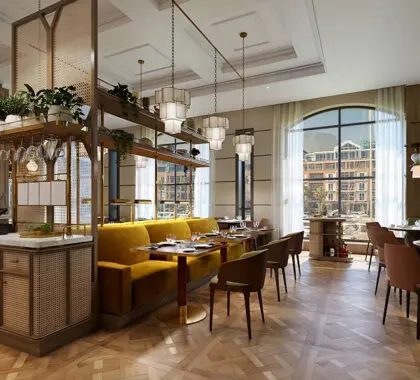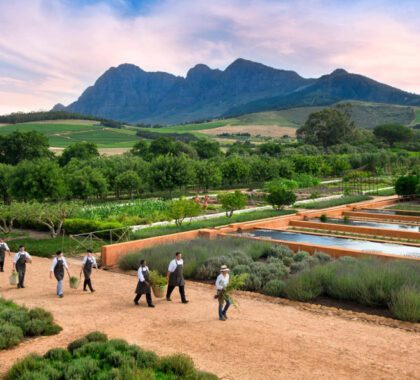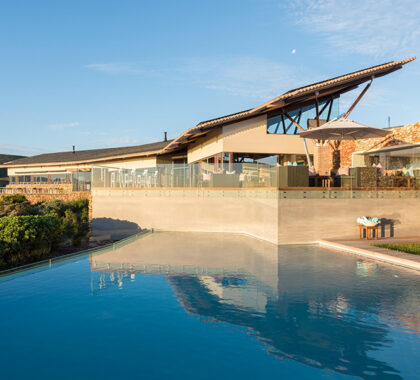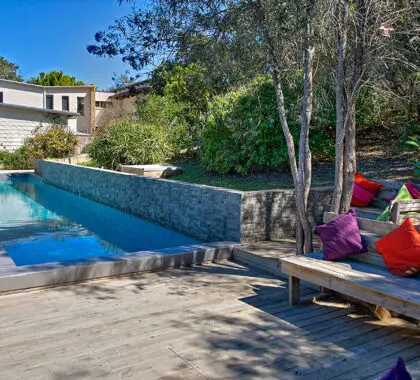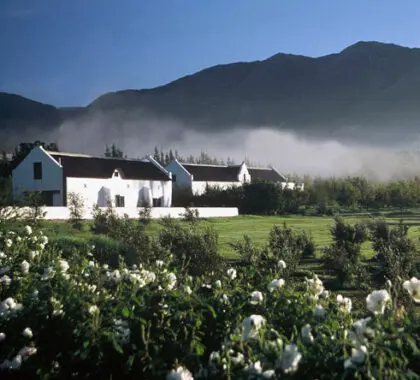Estimated reading time: 9 minutes
She pushes her huge tail down, ducks under the waves with tremendous forces and then, with colossal power, launches her huge body above the water, coming down with a fantastic splash. Everything is quiet except for the chorus of ‘Wows!’ from my fellow boat passengers. There’s a shared anticipation and keen excitement as we hope she’ll do it again… Our luck is in as she once again uses her tail fin to propel herself like an aquatic rocket above the ocean off Kleinbaai, a tiny hamlet on South Africa’s Whale Coast, less than an hour’s drive from Hermanus and regarded as the whale-watching capital of the world.
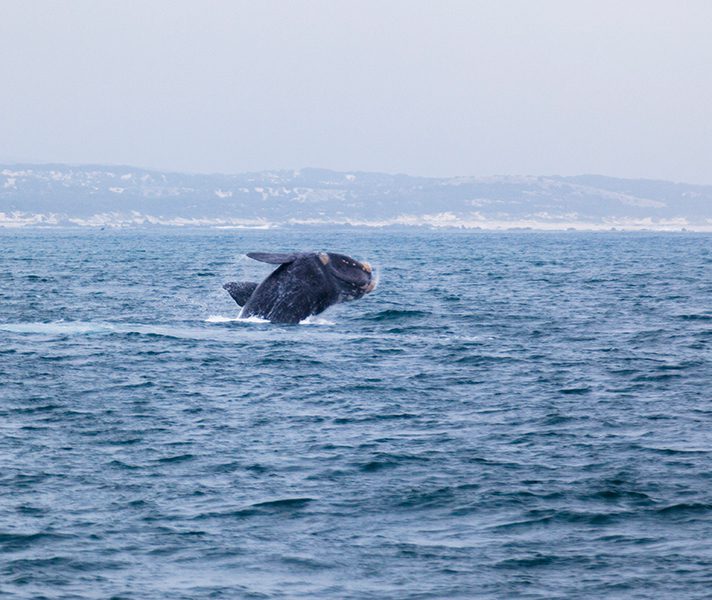
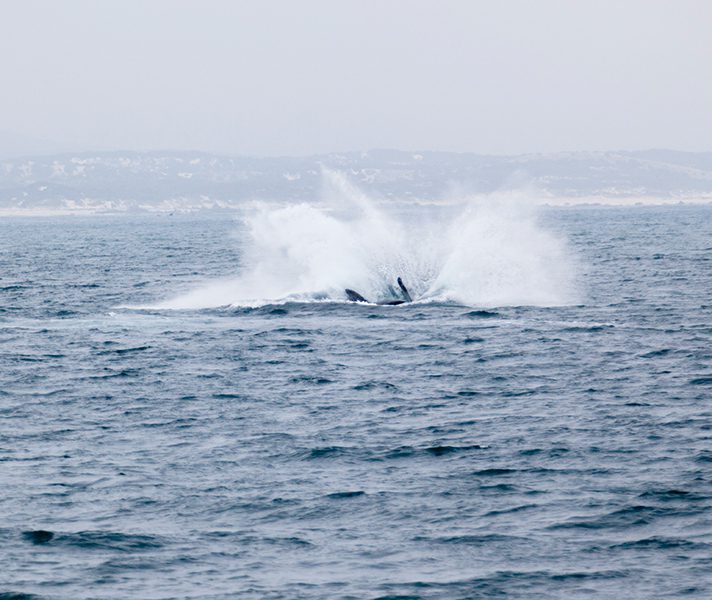


Every year, starting in about July, migratory southern right whales arrive after swimming thousands of kilometres from the Southern Ocean near Antarctica to mate and calve in the relatively warmer waters around Hermanus. This holiday town is less than two hours’ drive from Cape Town along a route so easy and scenic that we regularly recommend it as a self-drive to travellers who like a bit of independence on holiday. The whales are an incredible sight to see: massive males literally throw their weight around – sometimes to impress females, sometimes for the sheer fun of it. It’ll melt even the stoniest heart to see a young calf stick close to his mother as she teaches him how to navigate and even to do clumsy breaches of his own. Hermanus is known for excellent land-based whale watching – on a good day, you can stand on the rocks at Cliff Tops in the quaint town and enjoy their antics in the water directly below you. But my favourite way to see and appreciate these truly gentle giants is by slipping on a life jacket and setting out on a professionally skippered motorboat to see the whales up close.
After doing back-to-back boat trips in one day, here are my top tips to make the most of your whale-watching experience.
1. If you can, match your trip to the weather
Boat-based whale watching is essentially a ‘safari at sea’. Think of the boat as your 4×4, the skipper as your guide and the whale as the biggest member of the Big 5 (Big 6?). Much like animals in the bush, whales are sensitive to the weather and are more or less active according to it. On safari, the ideal weather is as windless as possible and not too hot – it’s the same for whale watching. Too windy and whales will generally prefer to stay underwater; too hot and, like us, they like to laze around and casually float about. Fortunately, these conditions don’t prevail at the height of Hermanus’s whale-watching season, which runs from about August to October; the winter storms have passed and the thermometer-topping days of high summer are still quite far around the corner.
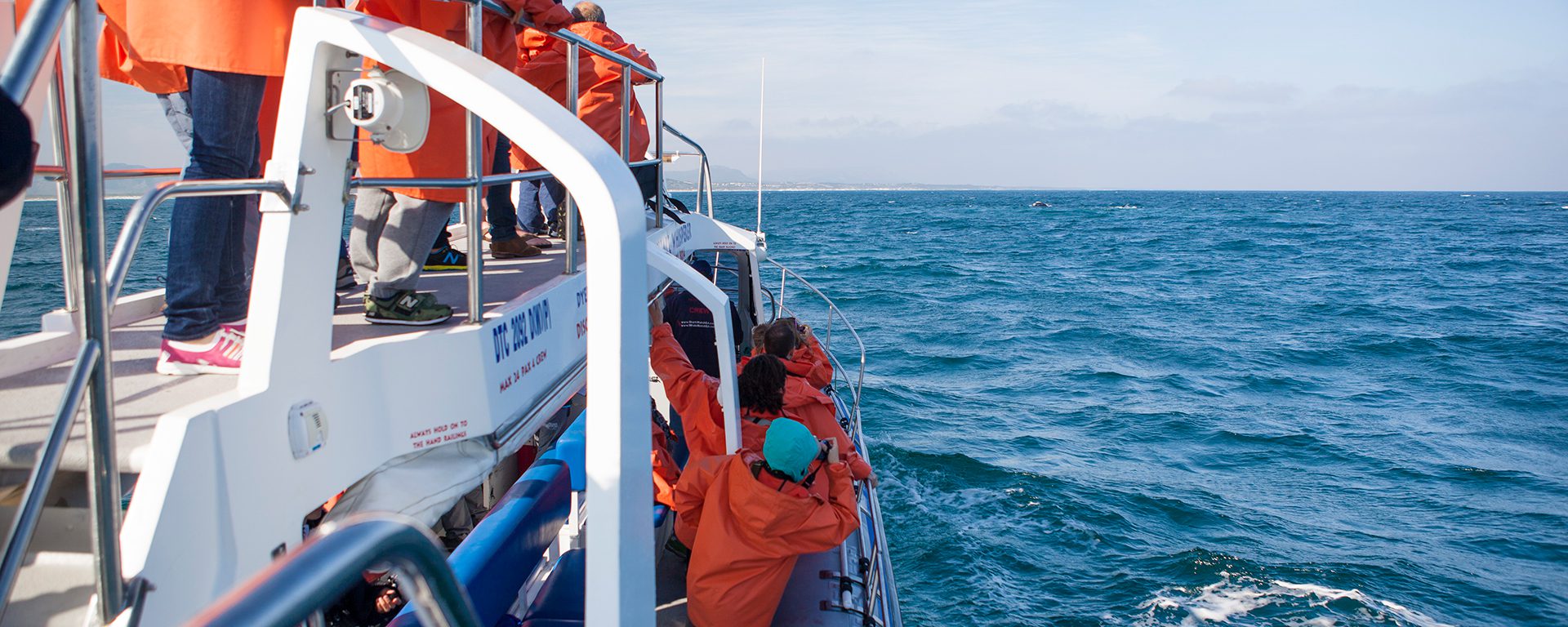
2. Water photographs best in bright light
This is a tip that runs opposite to land “rules”. Game drives go out early in the morning and late in the afternoon to make the most of the hours when animals are active and take advantage of the best light for photographs. These two slots are not the best light on the ocean, which needs to be flooded with enough direct sunlight to sparkle and shimmer in your photographs instead of appearing flat and grey. By midday, with the sun directly overhead, deep water lights up like stained-glass windows, revealing gorgeous shades of azure, turquoise and cerulean. Because southern rights are quite a dark grey, they stand out magnificently when the surrounding ocean is flooded with light, especially if you’re lucky enough to photograph one swimming directly under your boat (it happened on one of my outings – watch it on the video).
3. Try to understand and predict their behaviour
There are no guarantees in nature – which is what makes it so exciting – but understanding how breaching happens will stand you in good stead for not missing one of these spectacular launches. When only its tail is above water, it generally means that the whale is diving deep to pick up speed and power in order to throw its body out of the surf. They will also sometimes float just below the surface – this is the moment to get your camera ready to photograph an above-water fin that appears to be ‘waving hello’ to you!
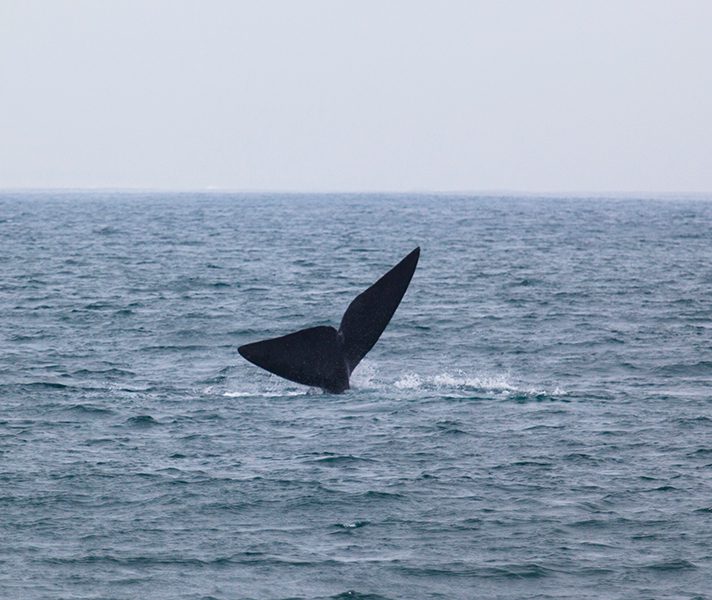
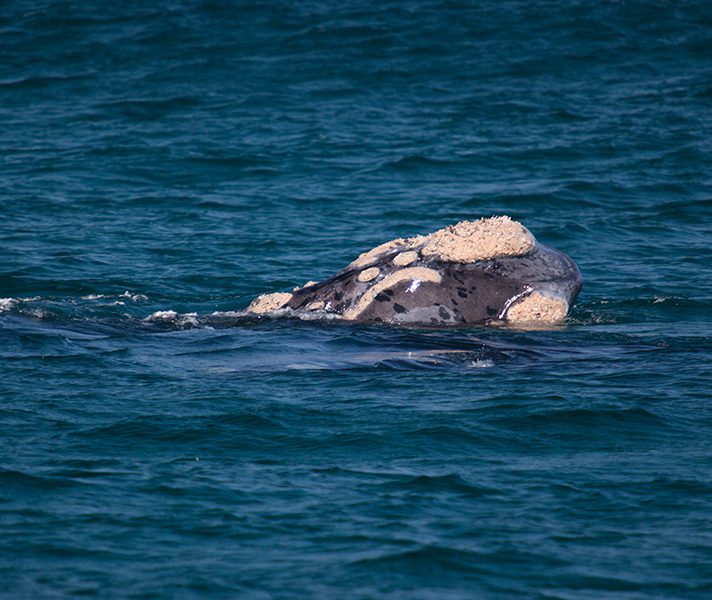
4. Don’t be squeamish – and prep your kids
Whales migrate to the area to mate and give birth. You may come across a group of males relentlessly pursuing a female until she’s exhausted and ‘gives in’ to being mated with by each in turn. You might want to think about how you will explain all of this to your children, especially if they’re at the never-ending ‘but why?’ stage.
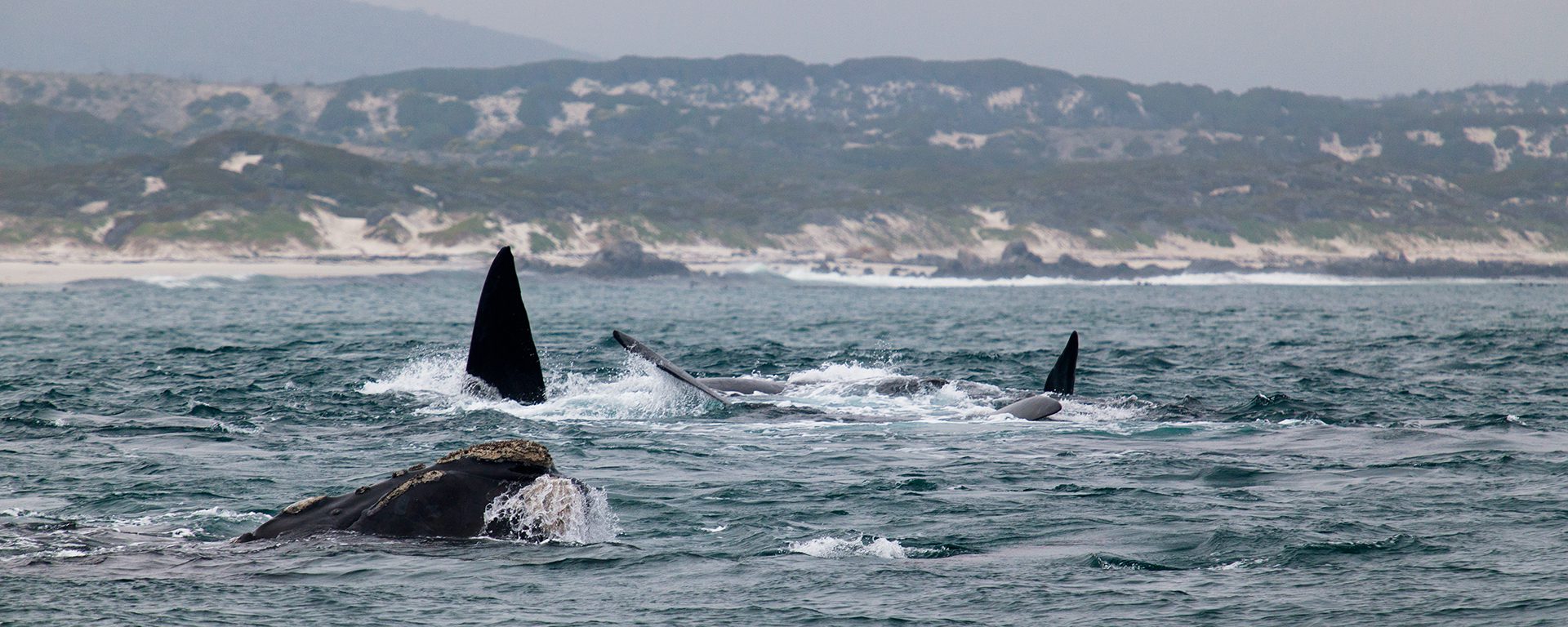
5. Take sensible precautions, even if you’re a seasoned sailor
Even if the water is flat as a pancake and you’ve been to sea a lot, consider taking anti-seasickness medication, preferably one that doesn’t make you drowsy. Seasickness can strike unexpectedly and it would be a shame to miss oceanic theatrics because you’re head-down in ‘the head’, as a boat’s toilet is called.
Eat breakfast, and bring water and a snack to nibble. The fresh sea air can be unexpectedly exhausting, making you hungrier or thirstier than usual.
If you have them, definitely bring binoculars (the boat won’t get closer than about 60m – about 196 feet – to the whales and are forbidden by conservation regulations from ‘chasing’ them) and long lenses for your camera. If you don’t use them, boats have water-proof storage bins under the seats to stow them safely.
Sun hats, sunglasses and sun-protection cream with a high SPF are non-negotiable: the UV glare off the water and the African sun are often under-estimated. But also bring a warm jacket as sea breezes can be notoriously frosty. Leave fashion on the quay: flat shoes with rubber soles, long trousers and a waterproof jacket are best. I even took a woollen cap and was glad I did – when the boat picked up speed, things got a little chilly.
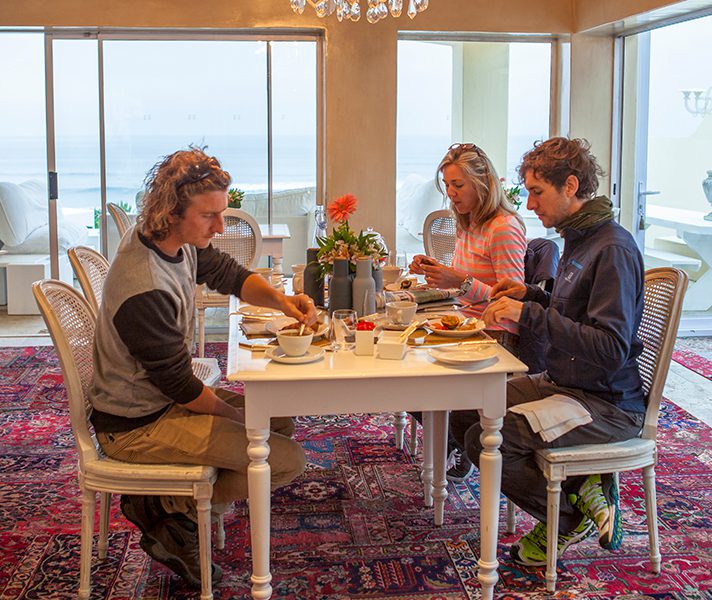
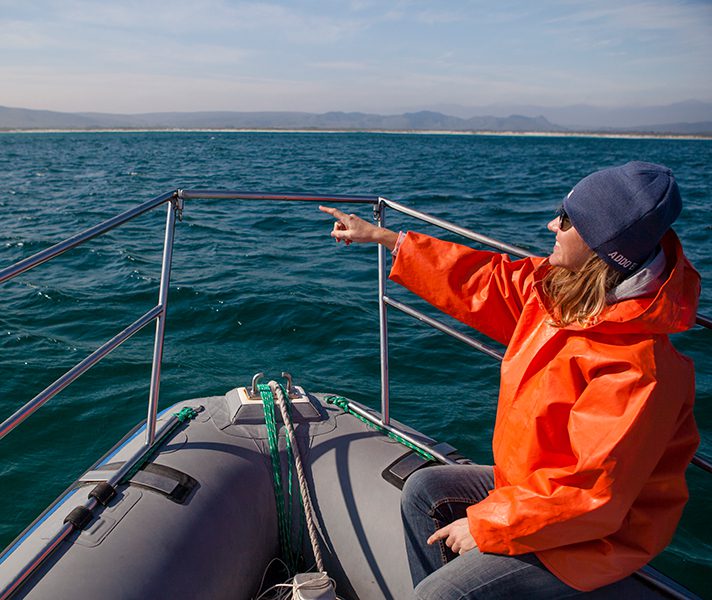
6. Use the crew – that’s why they’re there
Crew members are generally hugely passionate about what they do and love it when guests share their enthusiasm. It’s critical for your own safety to always obey all their instructions, for example, if you’re on the upper observation deck, they will tell you to ‘lean back’ when the boat is close to whales to keep the craft stable. But don’t be shy about asking questions or telling them if you’re feeling queasy. Believe me, there’s very little they haven’t seen or heard before, and they love to share their knowledge with you.
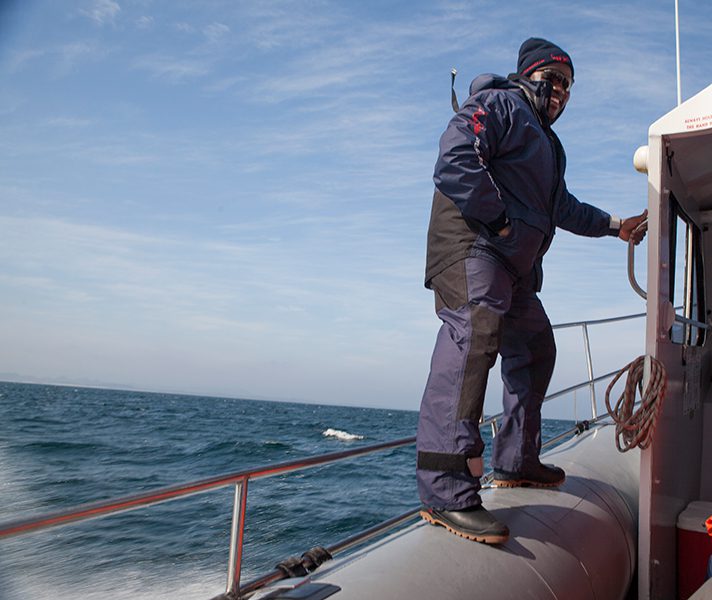
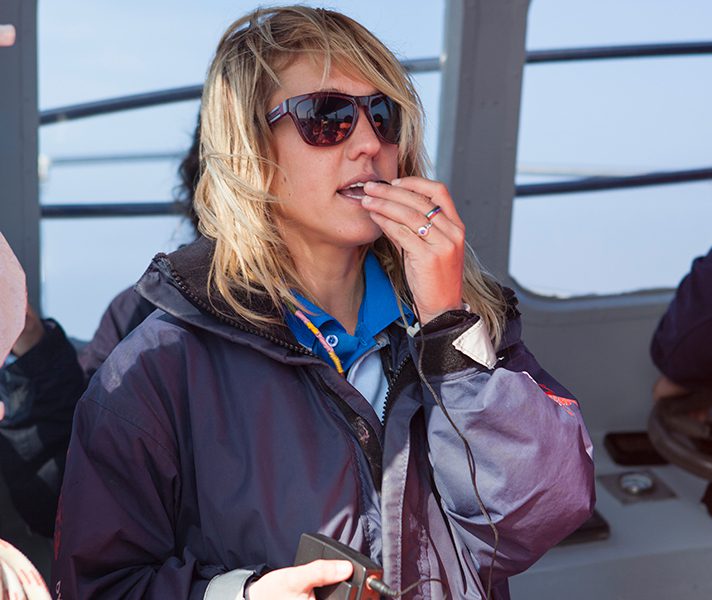
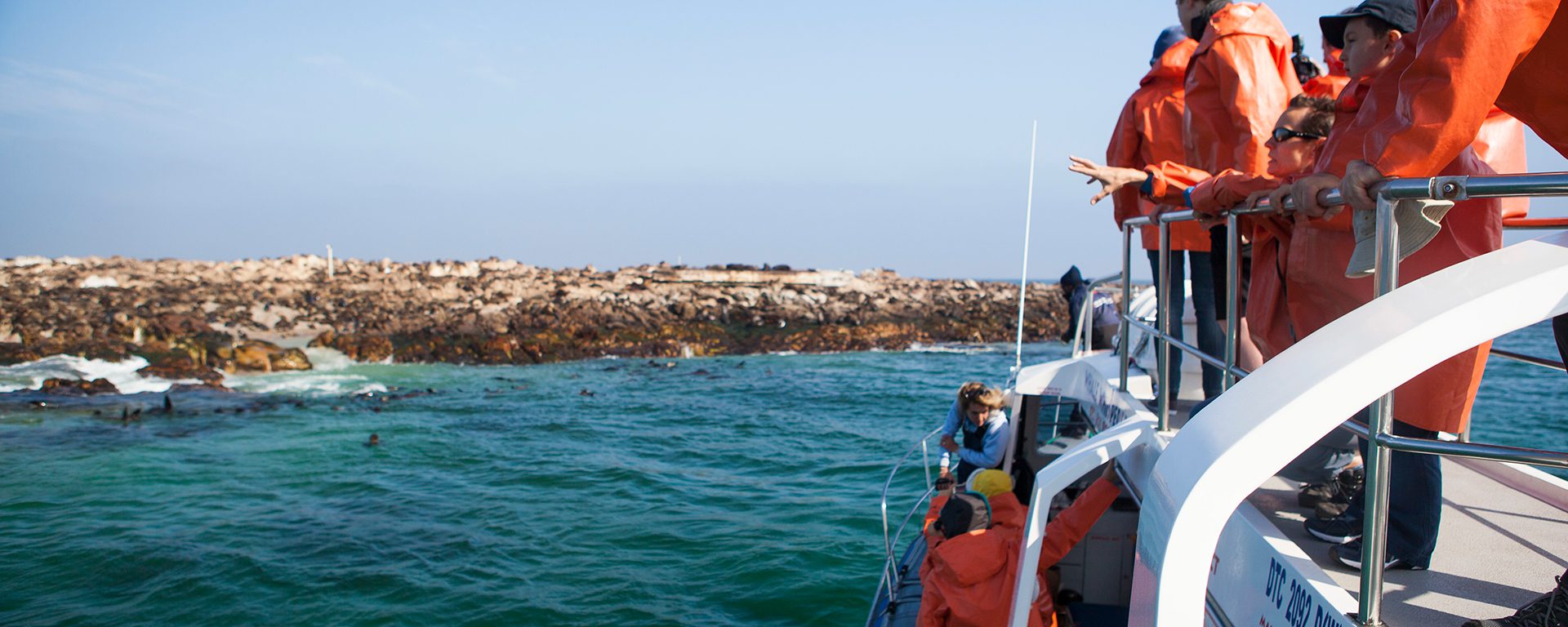
7. Expect the unexpected
Go out with an open mind. Half the fun of animal encounters is not knowing what will happen. In addition to whales, look out for comically round sunfish, pods of frisky dusky dolphins, sharks (Gansbaai, near Hermanus, is the world’s epicentre for shark-cage diving) and pelagic (sea) birds like sea gulls, endangered African penguins, cormorants and even albatrosses. Your cruise will probably take you past Dyer Island, which is home to hundreds of noisy Cape fur seals, whose sluggishness on land is matched only by their sleekness in the water. In short, it’s not only about the whales!
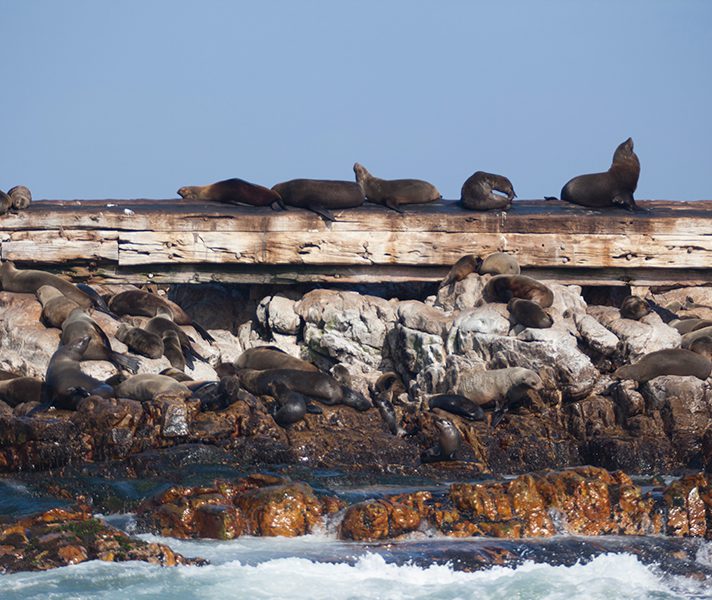
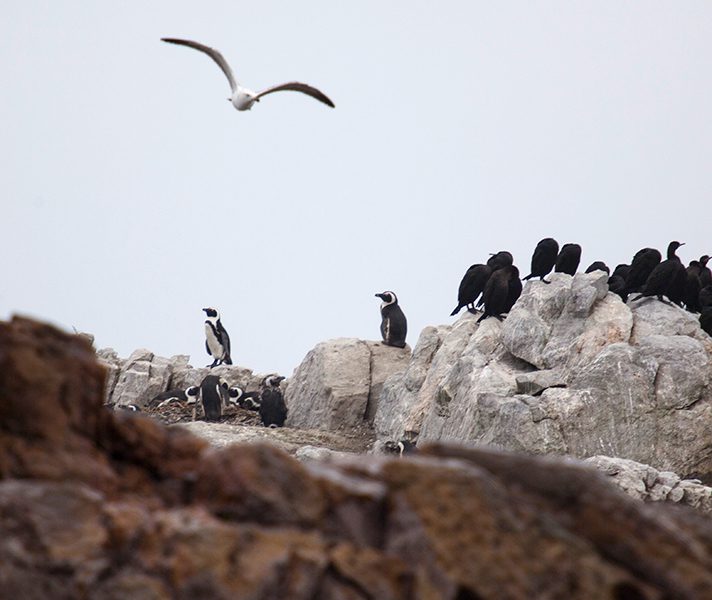
As the population of southern right whales gradually recovers after centuries of plunder, so whale watching is increasing in popularity and residents eagerly look out from July for the return of ‘their’ whales. Researchers have found that the same whales return; individuals can be recognised thanks to the irregular grey patches – which look almost like barnacles and are called ‘callosities’ – on their heads. One year you will see a pregnant female leave, the next, she returns to have her baby. It’s a beautiful cycle – a year-long migration from the icy Southern Ocean to the shimmering and gloriously warm Indian Ocean. All I know is, next year August I’ll be back in Hermanus…


